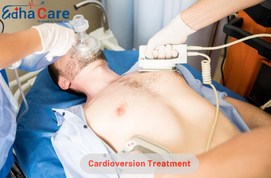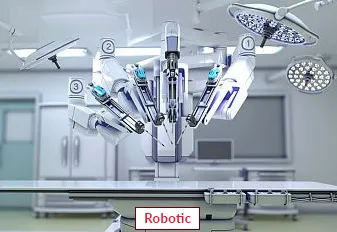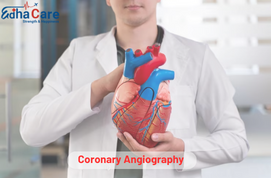Cardioversion Treatment

Cardioversion is a medical procedure used for restoring a normal heartbeat for patients with particular types of heart rhythm disorders, such as ventricular fibrillation or atrial flutter. Electrodes are positioned on the chest to provide a regulated electrical shock to the heart. The aberrant electrical activity in the heart is stopped by this shock, enabling the heart's normal pacemaker to take over and return the rhythm to normal. To treat unstable arrhythmias, cardioversion can be done as a medical emergency or as a voluntary therapy. To guarantee the comfort and safety of the patient, it is usually done under sedation or anesthetic.
Book an AppointmentAbout Cardioversion Treatment
Symptoms: Heart palpitations, loss of breath, dizziness, chest pain, irregular heartbeat (arrhythmia), or episodes of fainting may be signs that cardioversion is necessary.
Causes: People who have atrial fibrillation or fluttering of the atrium, which are irregular heart rhythms brought on by problems with the heart's electrical system, are usually advised to undergo cardioversion.
Treatment: By giving the heart a controlled electric shock, cardioversion attempts to treat the underlying arrhythmias and relieve related symptoms by restoring normal cardiac rhythm. Additional therapies could involve taking drugs to control irregular heartbeat or treating underlying cardiac issues that are causing the arrhythmia.
Procedure of Cardioversion Treatment
Preparation: To guarantee comfort throughout the treatment, the patient is usually given general anesthetic or sedative.
Electrode Location: To deliver the electric shock to the heart, electrodes are placed strategically on the chest.
Monitoring: To evaluate cardiac rhythm and keep an eye out for any negative reactions, continuous electrocardiogram (ECG) monitoring is started.
Shock Delivery: In an effort to return the heart's sinus rhythm to normal, a synchronized electrical shock is administered via the electrodes.
Observation: To guarantee a successful cardioversion, the patient's cardiac rhythm is continuously watched after the shock.
Recovery: Depending on the clinical situation, the patient may be hospitalized for additional monitoring or monitored in a recovery area until they are stable enough to be released.
Require Assistance?
Get A Quick Callback From Our Healthcare Experts
Other Specilities We Cover

Robotic Heart Bypass Surgery

Heart Bypass Surgery




